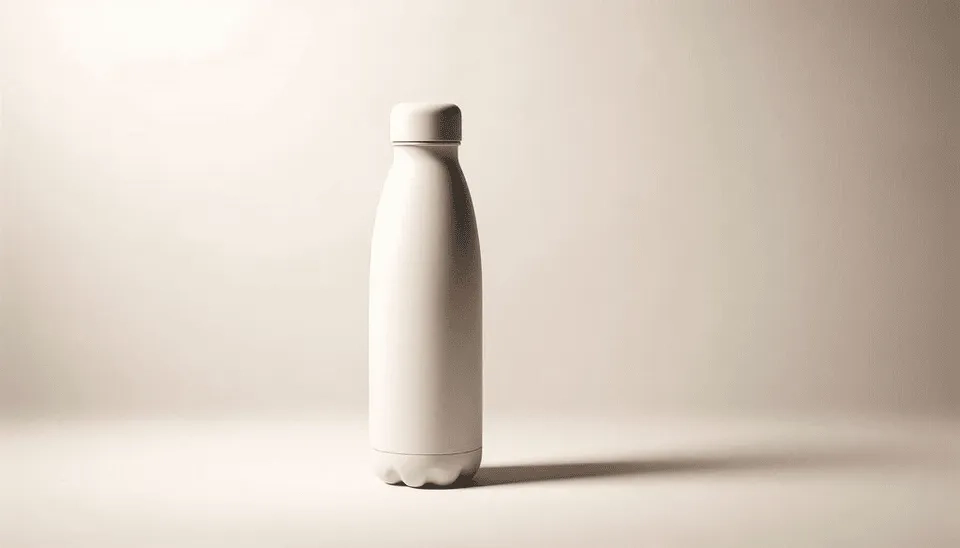
Filtered water bottles are emerging and becoming popular. If you want to purchase these products, follow this buying guideline, providing a step-by-step and comprehensive buying guide for filtered water bottles. These products offer many benefits, including the removal of microbiological, chemical and heavy metal contaminants and a significant reduction in chemical concentrations , as they are cost - effective and environmentally friendly. They can even remove chemicals commonly used in the treatment of water, such as chlorine, which can be unhealthy and affect the taste or odor of water. In addition to the advantages that mentioned earlier, filtered water bottles are beneficial than bottled or canned water because they are free of the chemicals found in plastic bottles, such as BPA. It also reduces the carbon footprint associated with producing and transporting bottled water.
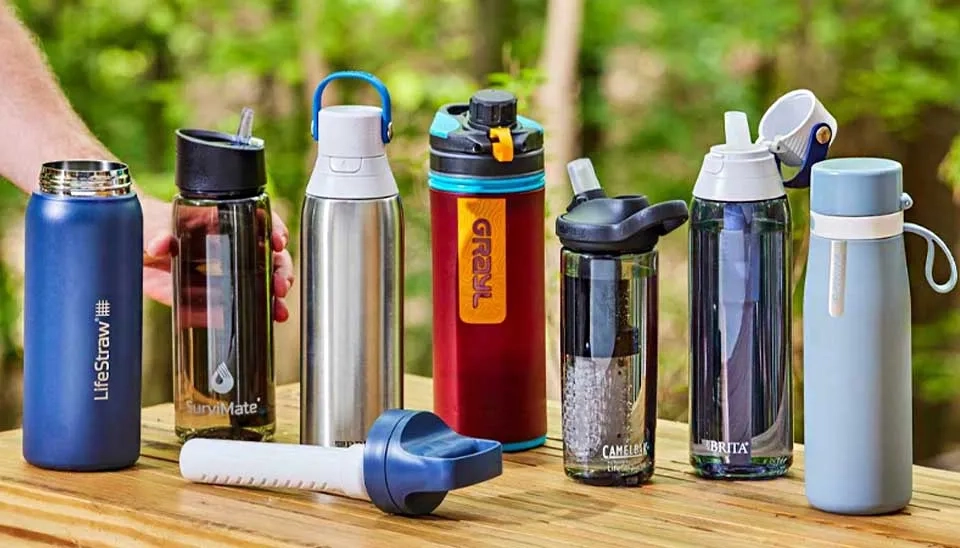
1. Key Considerations When Choosing Filtered Water Bottles
This buying guide section helps you to consider several key considerations. Filtered water bottles are environmentally friendly options for commuters, hikers or even home users. These products can significantly elevate the water quality of your drinking water. However, like any other product, some vital aspects need to be considered to ensure the best choice. Here are some key factors to help you choose the right filtered water bottles:
1.1. Purpose and Application
The first and foremost step in purchasing a filtered water bottle is to determine your goal, which will be evaluated in this section of the buying guide. One of the main applications of filtered water bottles are for those who engage in outdoor activities, such as hikers and campers. When you are in nature, accessing pure and clean water is not always possible. Although in nature streams, rivers, or lakes can be found; they might be contaminated by bacteria, parasites, or other pollutants. By using water bottles, you can provide safe water from those water sources without being worried about contamination. Another application of filtered water bottles is for travelers, especially those who travel frequently to places where access to clean water is difficult and tap water’s quality is questionable. Simply by using tap water with filtered water bottles, any issue with the water can be resolved. These products are even beneficial for homeowners whose houses are located in urban areas with less tap water quality than water treatment plants that utilize chlorine or fluoride, resulting in changing the taste of water. Filtered water bottles are advantageous for water consumption in school, home or at work.
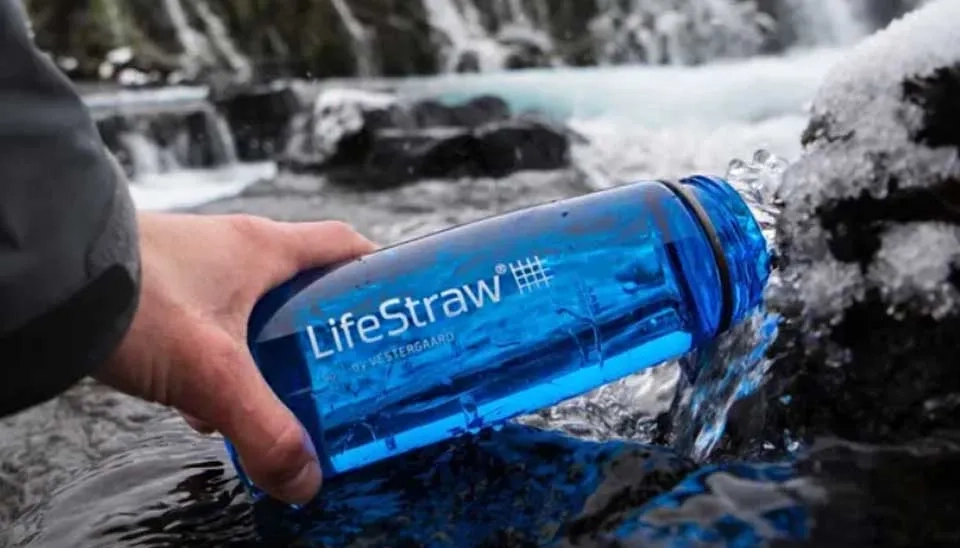
Filtered water bottles can be included in emergency preparedness kits for getting ready for disasters. In cases of major disasters such as floods and earthquakes, access to clean water can be limited, as bottled water is in short supply; thus, filter water bottles can provide portable, safe water from populated sources.
1.2. Filter Type and Technology
The contaminant you want to remove can determine the filter water bottle you should buy since different products offer different filtration and technology that is suitable for some specific contamination. For example, rivers and streams in nature might have bacteria, parasites, or microorganisms; thus, you must find the filtered water bottles that provide filtration and purification for these contaminants. Filtered water bottles offer 6 different filtration technologies, proving all ranges of contamination removal.
1.2.1. Activated Carbon Filters
Activated carbon filters are the most common type of filter among filtered water bottles, offering removal of contaminants by absorbing them to the surface of activated carbon material. This filter can effectively eliminate chlorine, which can be found in water taps sourced from water treatment plants. This can elevate the overall quality of the drinking water as well as improve the taste and odor of the water, providing a more pleasant water for drinking. This filter can also remove some metal contamination, such as lead, mercury, and copper, but it is not as effective as other filters that are designed for this purpose. Activated carbon filters are also effective in removing chemicals, such as pesticides, herbicides, and volatile organic compounds. In conclusion, these filters are widely used and cost-effective, but their performance is limited. These filters are not appropriate for microorganisms or nitrate; their life span is limited as well and must be replaced regularly.
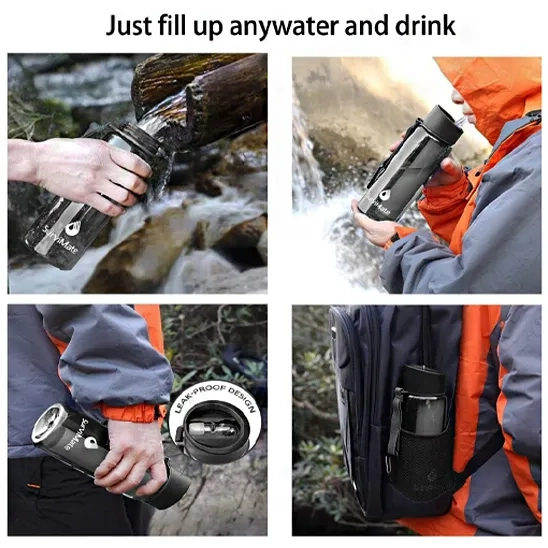
1.2.2. Hollow Fiber Membrane Filters
A hollow fiber membrane filter is an advanced filter, blocking contaminants based on their size when passing through fibers with porous walls. These filters are beneficial in removing suspended particles like bacteria or protozoa. Based on the pore size of the filter, the process works either with microfiltration or ultrafiltration. One of the advantages of these filters is that they work with no chemicals and are entirely mechanical. Also, the filtration process is faster than other filters. However, hollow fiber membrane filters cannot remove dissolved contaminants, and their performance can be limited by clogging if there is a high amount of sediment and suspended particles in the water.
1.2.3. UV Purifiers
The UV purifiers use ultraviolet light to eliminate microorganisms like bacteria. They do not use chemical substances or purification; thus, they are environmentally friendly. In this method, when water flows, the ultraviolet light is emitted to the water and penetrates the cells of the microorganism, resulting in their elimination. UV purifiers are suitable for removing microorganisms, but they can not eliminate dissolved chemicals or sediments in the water. UV purifiers have some drawbacks. One of them is that they degrade and require multiple replacements over time; also, they do not have residual effects, and if the water after purification by UV is exposed to air or a contamination source, the water pollutes again.
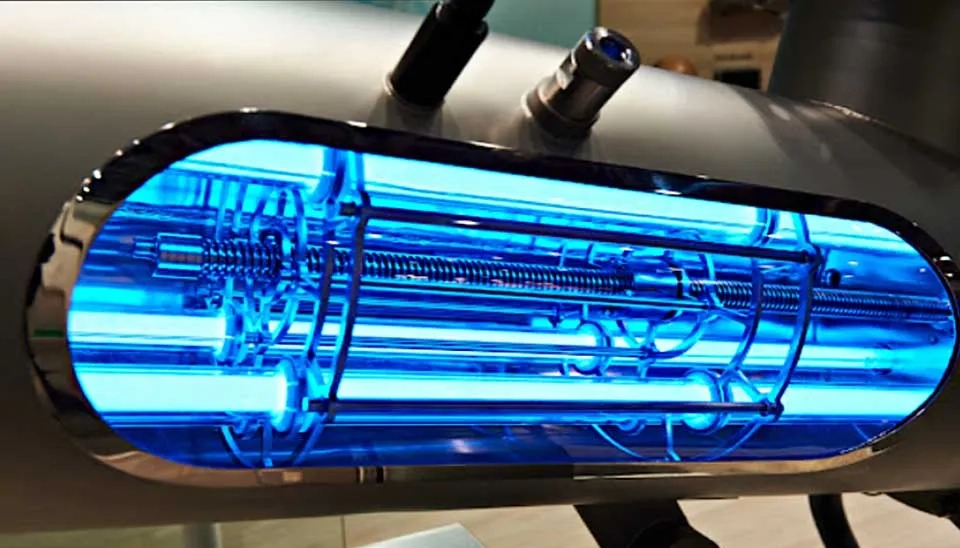
1.2.4. Combination Filters
Advanced filtered water bottles offer a combination of filters for more robust purification. This involves the integration of different filters to remove different sources of contamination, from sediments to microorganisms. This combination is suitable for people who need purification of a water source that has a range of contamination. There are some disadvantages for this type as well. For example, the design of these filtered water bottles is bulkier and more difficult to carry for a longer time; their maintenance cost is higher as they use different filters. Also, they need more maintenance for replacing filters.
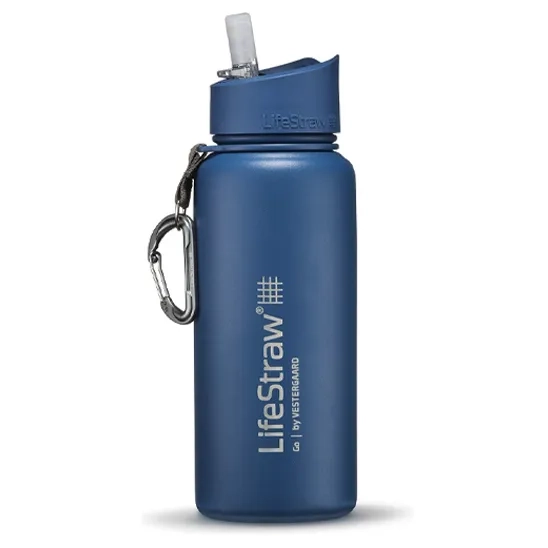
1.2.5. Connectivity
In the current developing world, novel technology has emerged in various devices. Some filtered water bottles are smart and are integrated with Wi-Fi connectivity. These smart bottles use alarms to remind you to stay hydrated. Some of these smart filtered water bottles provide users with the number of sips and record the sipping history on their apps, ensuring perfect hydration. Also, they have lights and sound effects to capture the attention of users drinking water. However, these bottles use batteries that frequently need to be recharged, minimizing their feature effectiveness. The variety of smart water bottles is not as much as regular ones, but they are getting popular and it is expected soon to be more of these smart bottles from different companies in the market.
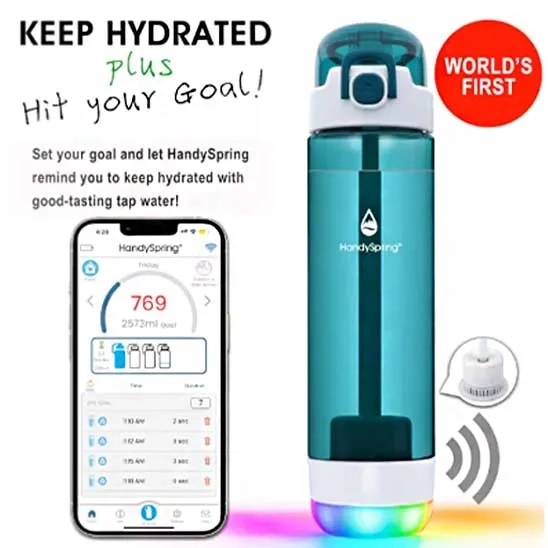
1.3. Filter Lifespan
The lifespan of filters is a crucial factor when selecting a filtered water bottle. The lifespan of filters can be impacted by factors like type of filter, the water quality, and the frequency of use. The type of filter is important because it has a different life span; for example, hollow fiber membrane filters have a higher life span than activated carbon filters, while UV purifiers have a longer lifespan than all the other filters. Moreover, the more you use the filtered water bottles, the faster the filter degrades because higher amounts of water pass through the filter, requiring more frequent changing. Severe environmental conditions can affect the filters as well. Water with very high or low temperatures can damage the filters and decrease their performance.
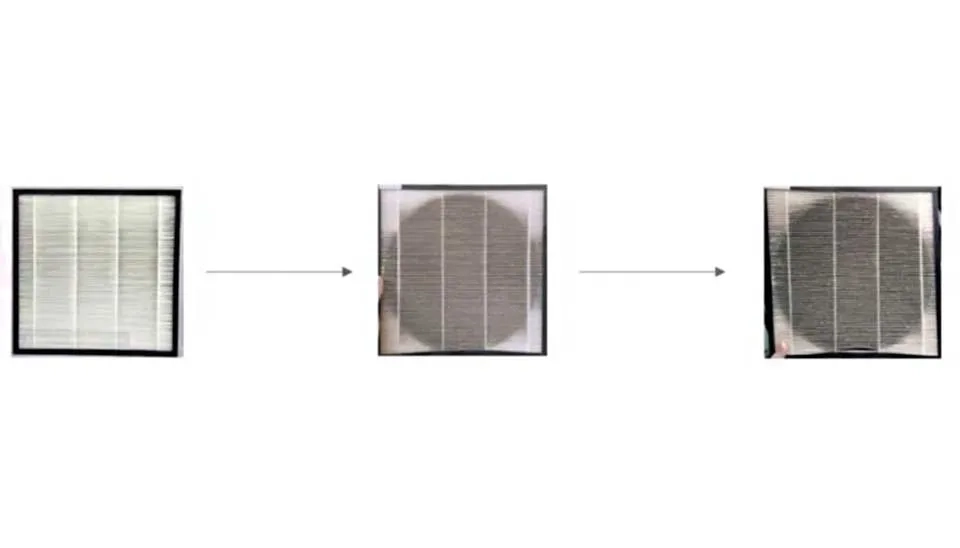
1.4. Flow Rate
Flow rate is the speed that water passes through the filters and comes out of the bottle. It is usually measured in liters per minute (L/min) or milliliters per second (mL/s). Flow rate is important because if the flow rate is too high, the purification process will be time-consuming. While a low flow rate can be discouraging and time-consuming. A good filter water bottle must have an optimum flow rate. The flow rate is influenced by the type of filter. For instance, activated carbon filters have a moderate flow rate, hollow fibre membrane filters have a slow flow rate, and UV filters have very high flow rates. The flow rate can significantly impact the user experience; since many individuals use filtered water bottles in an emergency or in a hurry, the low flow rate could be discouraging.
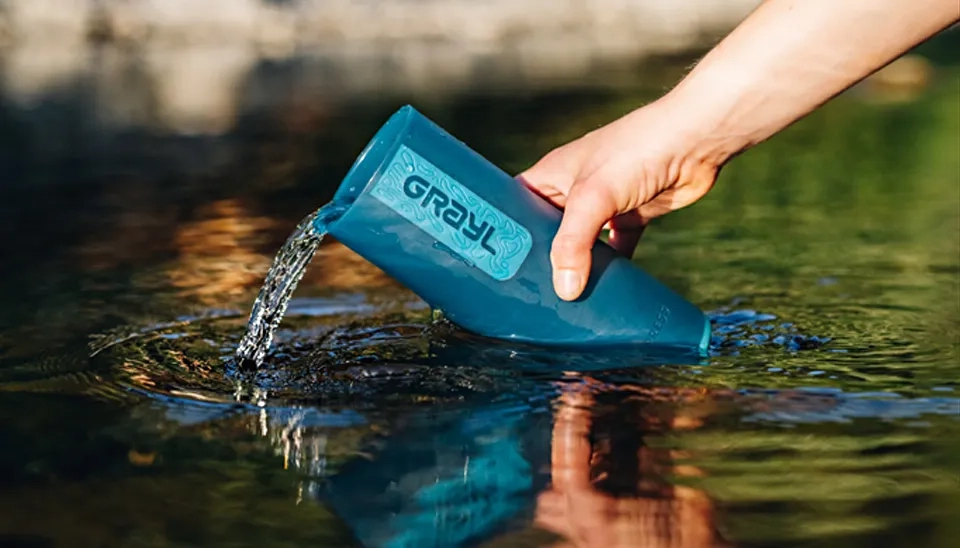
1.5. Capacity and Size
Capacity and size are important when considering buying filtered water bottles because they directly correlate with convenience and portability. The capacity of filtered water bottles is generally 400 ml to 1 liter. If you use the bottle frequently, choose filtered water bottles with higher capacity to minimize the number of refills. Lower capacity provides a portable solution for people who need less water during a day, while bottles with higher capacity are suitable for hikers and campers that have less access to the water sources in nature. However, these bottles are bulkier and more difficult to carry. Another fact is that bottles with higher capacity need filter replacement more frequently because more water is passed through the filter, which minimizes the filter's lifespan. Also, there are stainless steel bottles that feel premium, are durable and can sustain the water’s temperature for a longer period, but they are heavier than other types.
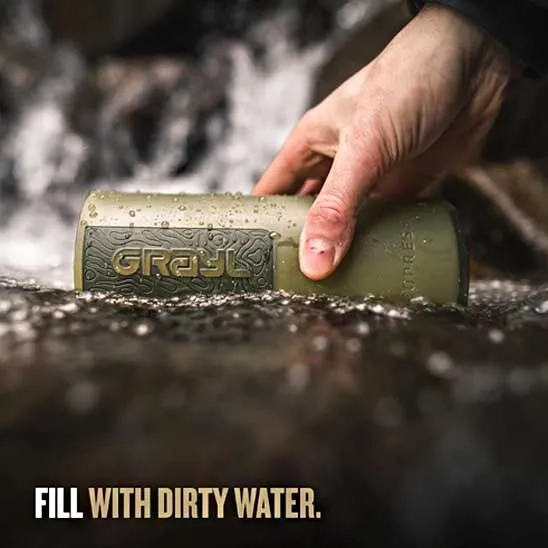
1.6. Design
The convenience and functionality of filtered water bottles are directly influenced by their design. The overall shape plays a crucial role, with slimmer and more compact bottles being easier to carry and fit into bags. In contrast, wide-mouth bottles, though bulkier, simplify the refilling process—especially when sourcing water from rivers and streams, where filling a bottle can be challenging. Material choice also impacts usability. Most filtered water bottles are made of plastic, which keeps them lightweight but prone to retaining stains and odors over time. Glass-filtered bottles avoid these drawbacks but are heavier and more fragile, making them less ideal for outdoor activities. Silicone bottles offer flexibility but lack durability compared to other materials.
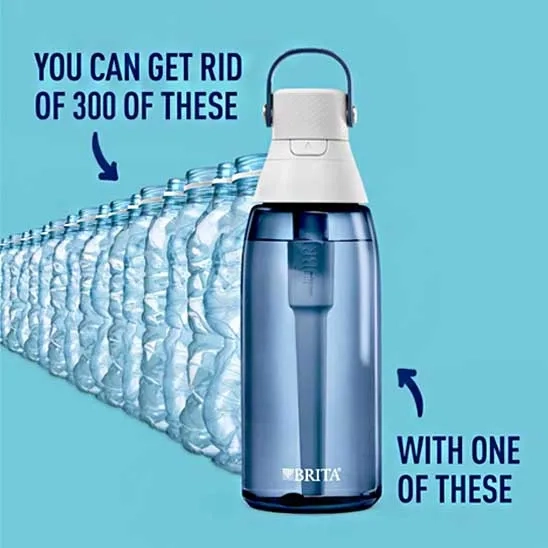
For filtered water bottles to be more suitable to use, the handle or strap is important, especially for bottles with higher capacity, adding to the portability of the bottle. For carrying the bottle, an organic grip is useful, helping hold the bottle easier. In addition, mouth opening is important. While wider ones allow the cleaning process and using ice easier, narrow ones offer more convenient drinks. Overall, a good filtered water bottle should be neither too narrow that the drink becomes hard nor too wide. To tackle these issues, some bottles offer flip-top or spout designs, making the drinking much easier for active users. Some filtered water bottles have spelling problems that, in case of not using them, they leak, which can be annoying when you place it in your bag. Therefore, some companies offer locking caps or a twist-to-lock mechanism to avoid spilling.
1.7 Power source
Smart filtered water bottles usually employ sophisticated filtration and purification systems that require a consistent power supply. Most of the bottles use rechargeable lithium-ion batteries as an energy source to power UV-C purification units, which kill bacteria, viruses, and other unwanted particles. These batteries are usually charged via USB-C or micro-USB ports to ensure the convenience of consumers as they go about their activities. Some technologically enhanced bottles also have removable or replaceable batteries for convenience during prolonged use. Battery power improves efficiency and efficacy but requires taking into account battery life, charge convenience, and construction durability in a wise filtered water bottle choice.
1.8. Cost and Budget
When choosing a filtered water bottle, the price is important, which can determine your preliminary choices. The price of the filtered water bottles is influenced by the type of filter, material, capacity and additional features. Bottles with activated carbon filters have the lowest price, with prices below $30. These filters can remove sediments and rudimentary contaminants from the water but do not offer comprehensive filtration. Furthermore, advanced filtered water bottles that use combinations of filters can cost between $30 and $100. These bottles offer multiple filtration options, ensuring clean and safe waters.
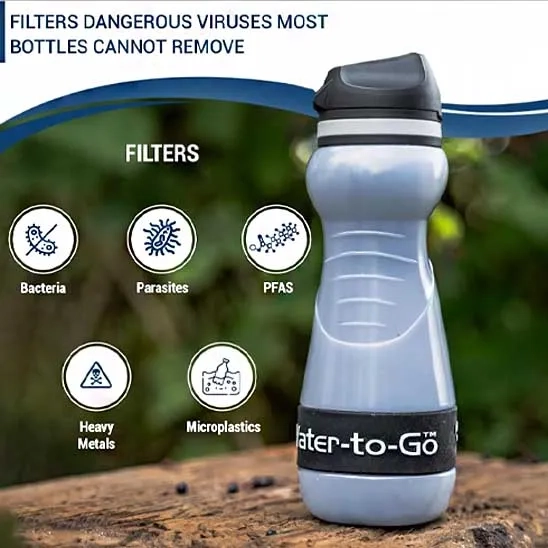
Another element that can be influenced by the price is the material. The cheapest filtered water bottles use plastic and the most expensive ones use silicone. Another cost that needed to be considered is the replacement of filters. Different filters have a varied life span, typically from 100 to 300 liters, after which their performance degrades significantly. Based on the filter type, the cost of replacing filters is different from $10 to more than $30. For example, UV purification, the cost of changing can be more than $50. Some filtered water bottles might provide additional features like smart sensors that can be connected to the smartphone to help individuals stay hydrated, insulation or built-in straws. These features can increase the price of the filtered water bottles.
1.9. Customer Service
Here in this buying guide section, we talk about customer service. Good customer service ensures that users have the best experience of using the filtered water bottles. They can start by helping users before buying the products by providing educational content on how the filtered water bottles work, post-buying instructions on how to replace the filters and any troubleshooting. An appropriate company must be responsible toward its clients about filter replacement, providing new filters in a short time, as well as refill subscription services. Many filtered water bottles on the market offer warranties, which can be helpful because many bottles are used in outdoor environments where the filtered water bottles could be subjected to impacts. The level of responsiveness of a company can be found in the comments and reviews sections of online platforms like Amazon. If a user has issues with bottles and does not know how to replace the filters, customer service companies should offer online forums or social media groups for customers to share experiences. In these environments, users can share practical issues and help each other to solve the problems.
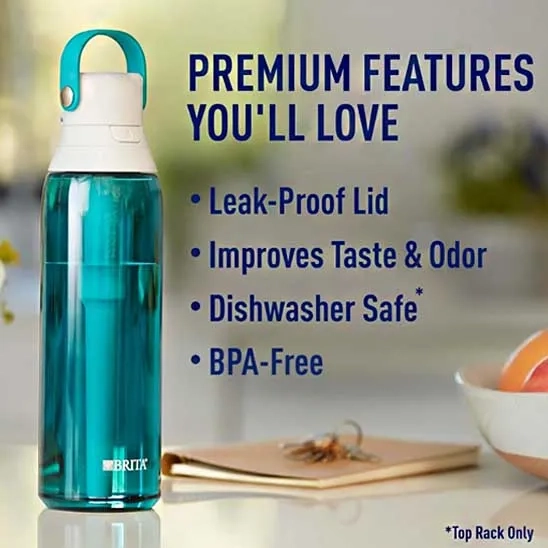
1.10. Product Ranking
To choose the best filtered water bottles, it is important to consider all the criteria that we have mentioned, helping you to make an informed decision. To get a better idea about the overall performance of filtered water bottles and compare them, try to use online platforms like Amazon and read the reviews and comments of the previous users that have experience using the products. In addition to this, read our article, ‘10 Best Filtered Water Bottles of 2024 for Travel and Home Use. The products in the article can serve as your preliminary choices; next, based on other criteria, you can add or delete products until reaching the best choice. In this article, ranking the filtered water bottles was based on Bayesian ranking rather than traditional methods. In the article mentioned above, the Brita Insulated Filtered Water Bottle ranked first among the available filtered water bottles on the market. The Brita filtering water bottle can remove chlorine (taste and odor) and other contaminants, featuring a built-in carrying loop and an easy-open lid. It is a durable and BPA-free product that has a leak-proof design to avoid drips and spills. They are easy to clean and dishwasher safe. By using Brita, reduce your use of 1800 single-use plastic bottles a year. It is recommended to replace the filter after 40 gallons or every 2 months.
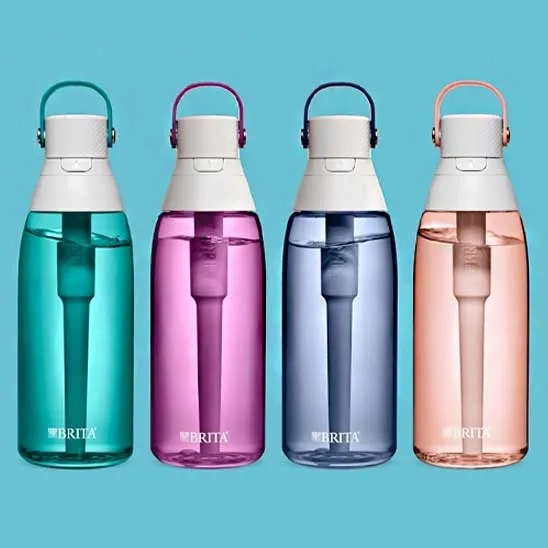
2. Comparing Different Types of Filtered Water Bottles
This buying guide section evaluates different filtered water bottles to assist you in selecting the best one. It is essential to compare different filtered water bottles based on their features to make an informed decision.
2.1. Filters
These products can be categorized based on the filter they use. Activated carbon filters are the most affordable ones with the ability to remove chlorine, bad taste, and odor. However, these filters are not appropriate for removing microorganisms or nitrate. Next are bottles with hollow fiber membrane filters, which use porous walls to divide the substances based on their size. However, hollow fiber membrane filters cannot remove dissolved contaminants and their performance can be limited by clogging. Filtered water bottles by using UV purifiers can eliminate microorganisms like parasites in the water, but these filters degrade and require multiple replacements over time. The most frequent type of filtered water bottles are those with a combination of filters. These integrations of filters enable the product to remove various contaminants.
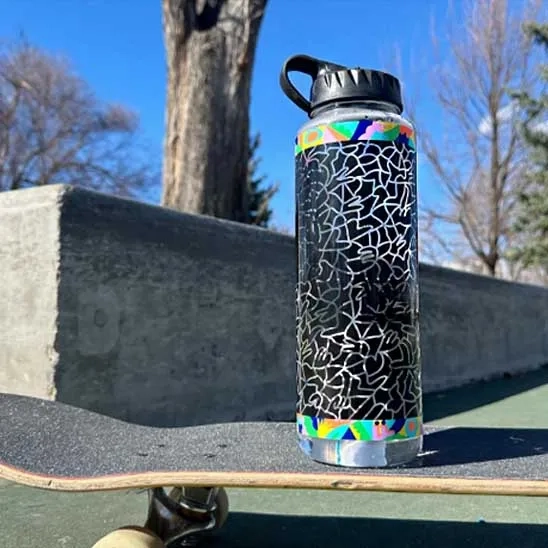
2.2. Capacity and Flow rate
Filtered water bottles vary significantly in size and flow rate, affecting how convenient they will be under any circumstance. Small bottles, typically ranging between 500 mL and 750 mL, are light and can be easily taken along but will require more frequent refilling and are thus not ideal for outdoor activities. Large bottles, typically ranging between 1 to 1.5 liters, provide more water per fill-up but might weigh more and take up more space. Flow rate is also an important consideration. The high-performance carbon or fiber membrane filter bottles have a high flow rate to ease drinking, while those with combinations of filters tend to diminish the flow rate. Other smart bottles applying UV purification are not subject to an affected flow rate since they deal with light and not mechanical filtration.
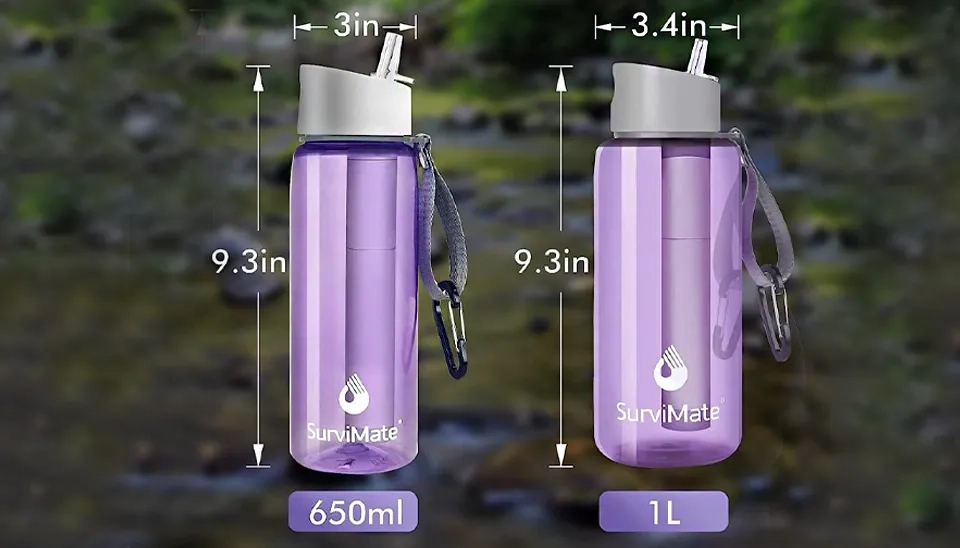
2.3. Connectivity
Smart filtered water bottles differ in connectivity, offering different levels of convenience and functionality. Some premium models feature Bluetooth or Wi-Fi connectivity, allowing users to pair their bottles with mobile apps to monitor hydration and filter life. Whereas connected bottles provide real-time monitoring and maintenance alerts, they rely on secure internet or Bluetooth connections that may not always be available in off-site or remote settings. In comparison, basic filtered bottles lack connectivity but provide constant manual performance without battery or signal deterioration. The choice between using a connected or unconnected bottle depends on user choices—either for technology-driven hydration monitoring or straightforward, standalone design.
3. Assessing Your Specific Needs Before Purchase
It is critical to assess your specific needs before making a purchase in order to choose a filtered water bottle that meets your needs. This includes the level of purification and setting a reasonable budget. By following these steps, knowledgeable purchases that match your objective can be guaranteed.
3.1. Calculate Your Requirements
It is important to identify the level of filtration you need based on your application to choose the best filtered water bottle that you require. The first step toward this is the water source that you want to use filtration on. For example, usually tap water does not have heavy metals and microorganisms but rather has dissolved chemicals like chlorine. Therefore, activated carbon filters are more suitable to use in this source. If you plan to use the filtered water bottles in the rivers or streams, it is better to use combination filters, especially those that are effective in removing microorganisms and heavy metals. Another matter is purification efficiency on different sources that needs to be considered because not all the contamination can be removed by the filtration process. For example, while the efficiency of the filters on dissolved chemicals is higher and those contaminants can be eliminated, for heavy metals the efficiency can decrease because the process of elimination is more challenging. Furthermore, purification level relates to the capacity and frequency usage of filtered water bottles. Thus, overusing can minimize the lifespan of a filter, leading to a decrease in efficiency over time.
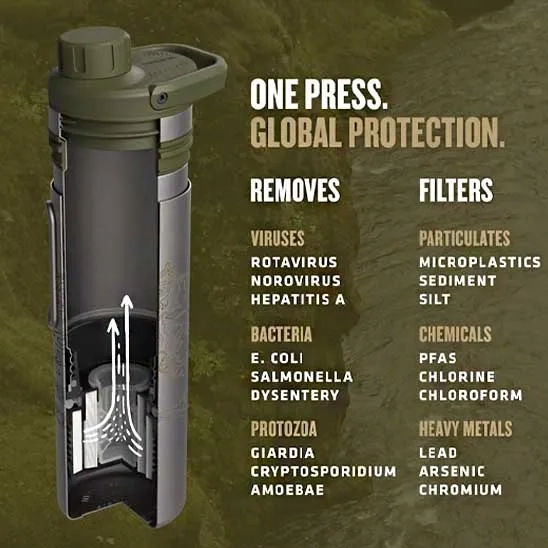
3.2. Set Your Budget
One of the important parts of buying a product, especially filtered water bottles, is price. The price can vary significantly based on elements like filter type, size, material, capacity and brand. By determining the budget, you can narrow down your options. The filtered water bottles have a range between $10 and more than $100. The advanced models, which have a higher price, offer multiple filters, titanium alloy material, and even smart connections to the smartphones. The table below summarizes some models and features with their prices.
Table 1. Some filtered water bottles in the market along with their price and features. | Comprehensive Buying Guide to Filtered Water Bottles
Product | Feature | Price |
Brita Insulated 36-oz Filtered Water Bottle | Filter chlorine (taste and odor) and other contaminants | $28.99 |
Water-to-Go (20 oz/60 cl) Filtered Water Bottle | 3 filters to remove a wide range of contaminants | $55.99 |
Grayl GeoPress 24 oz Water Purifier Bottle | Can remove all pathogens | $100 |
Grayl UltraPress Titanium 16.9 oz Water Purifier | Titanium alloy, which adds to the durability | $179.95 |
Boost Smart Water Bottle | Reminder to drink water and water tracker | $54.99 |
Hidrate Spark PRO Smart Water Bottle | Can track water intake with a bluetooth connection, and LED reminder when drinking is necessary | $66.99 |
Vita Smart Water Bottle | Providing connection to the app to customize the hydration goal. | $49.99 |
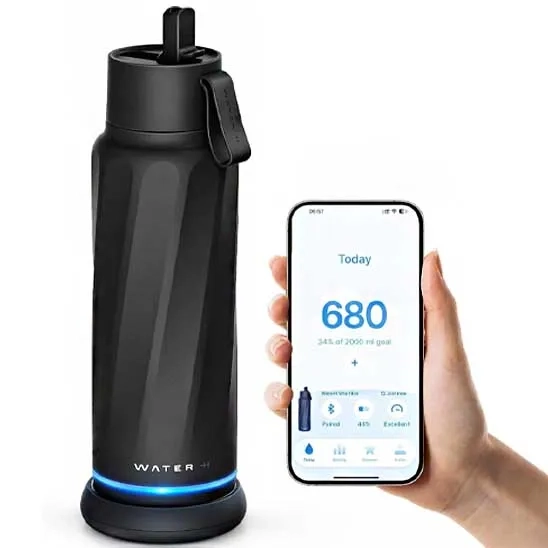
4. Mistakes to Avoid When Choosing Filtered Water Bottles
When choosing a filtered water bottle, certain key factors need to be known to avoid any mistakes. This section of the buying guide talks about these mistakes. One of the most common mistakes is to overlook the application, which is directly related to the water source you plan to use the bottle on. Because selecting a filtered water bottle that is not suitable for your application might lead to the loss of money. For example, if you intend to use the bottle in outdoor activities such as hiking or camping, smart filtered water bottles are not a good choice for you, since they work with batteries to send alarms or connectivity and you can not recharge the battery outdoors. For individuals with these goals, water bottles with multiple filters are better, since the rivers and streams can be subjected to the various microorganisms as well as chemicals and heavy metals. Another factor is the post-purchase costs. Many filters need to be replaced after using a certain amount of water; these filters must be purchased by the users. Then, the filters must be changed by the users, and if the installation process is too hard, people would be unable to use the product. Therefore, choose a filtered water bottle that has a simple process of changing filters. However, customer service can guide you through these processes. Therefore, select brands with a good reputation for support, as this can make a significant difference if troubleshooting or replacement parts are needed. Not considering adequate flow rate is another mistake that users can make. For instance, if you are a hiker and need to rapidly drink water, filtered water bottles with a low flow rate can be annoying and time-consuming. Furthermore, pay attention to the materials of the filtered water bottles because if you are using the product outside, extreme temperature might damage the bottle and release BPA, which is detrimental for health. Look for BPA-free or stainless bottles to rectify this issue.
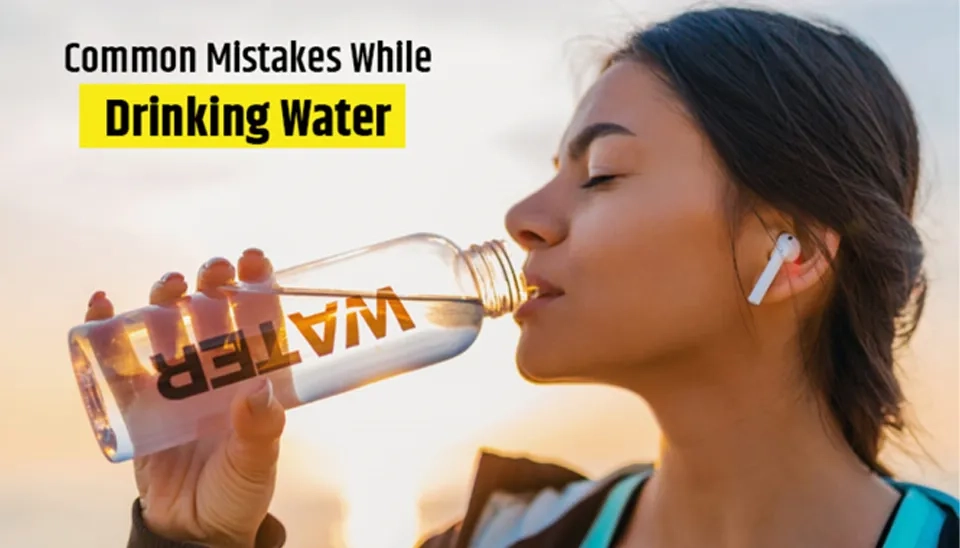
5. Checklist for Choosing the Best Filtered Water Bottles
Have you recognized the filter type that is best based on your application? (e.g., activated carbon filters, hollow fiber membranes or UV purifiers, etc.)
Have you identified the main water source you intend to use the filtered water bottles on? (e.g., rivers, streams, lakes, tap water, etc.)
Have you identified the main application? (e.g. in door, out door, etc.)
Do the filtered water bottles come with the technological features you need? (Consider connectivity, such as Wi-Fi or Bluetooth connection.).
Have you considered reliable connectivity and prompt alerts? (e.g., SMS or app notifications to stay hydrated)
Does the expense align with your budget while maintaining the overall requirements and keeping the right balance between expense, features, and durability over time?
Are the materials durable and aligned with the environment in which you plan to use the products? ( plastic, steel, stainless, titanium, glass)
Have you searched for the customer service and availability options? (e.g., warranty, professional assistance, return policy, rapid delivery, packaging, free monitoring service, and responsiveness)
Have you searched product rankings and reviews to ensure reliability? (e.g., Bayesian Rank, buying guides, reviews, comments, etc.)
6. Where to Buy Filtered Water Bottles
Currently, not a lot of companies offer filtered water bottles. To maximize your experience, try to select a well-known company in this area. Brita has 2 types: hard plastic and stainless. Philips has a plastic, steel, stainless and a filtered water bottle that uses UV. LifeStraw has two series that are well known: the Go series and the Peak series. CamelBak has the Eddy+ series, offering affordable prices. These are the pioneering companies in the field of filtered water bottles. It is advisable to buy from these companies since they are reputable in these fields for producing different filtered water bottles. For buying from them, you can use online platforms like Amazon, which offers a comprehensive selection of filtered water bottles with detailed customer reviews, ratings, and comparisons. This makes it simple for buyers to assess each product's performance and quality based on real user feedback. Walmart can be effective for comparison of different products.
7. Conclusion
This buying guide provides an extensive guide for buying filtered water bottles, encompassing key features like filter type and technology, flow rate, and connectivity. This buying guideline is suitable for homeowners, hikers, campers and travelers. This guide supports many different types of filtered water bottles, including single-filtration, combined filters and smart ones. While single-filtered water bottles are affordable, they offer limited purification. Combined filter bottles are able to eliminate a wide range of contaminants , such as heavy metals, chemicals and pathogens, providing a wide range of filtration for people whose source of water is unsafe. On the other hand, smart water bottles are gaining popularity, offering connections to smartphones via Wi-Fi and Bluetooth to track data and alarm for drinking water. This type of bottle is beneficial for homeowners, where they can recharge their filtered water bottle. At the end, this buying guide provided a checklist that individuals can use before buying a filtered water bottle to make sure to consider every single detail, optimising their selection. With this comprehensive buying guide of filtered water bottles, users can select a device that not only meets their needs but also adapts to future requirements, ensuring efficient water quality and potentially saving on maintenance and costs.
